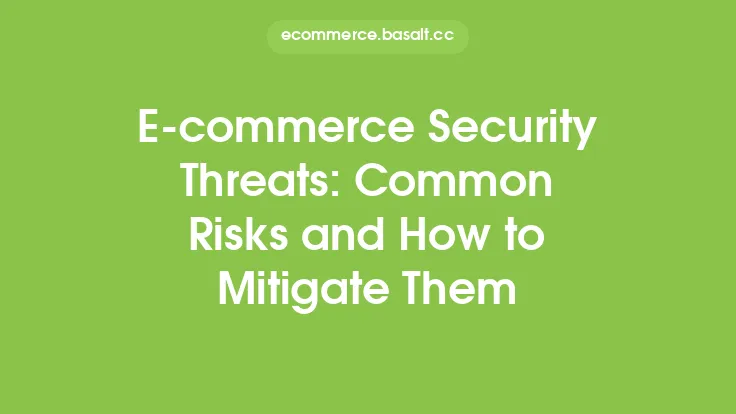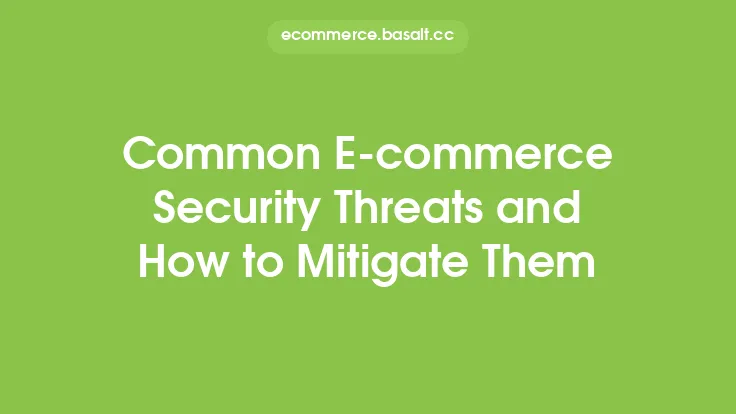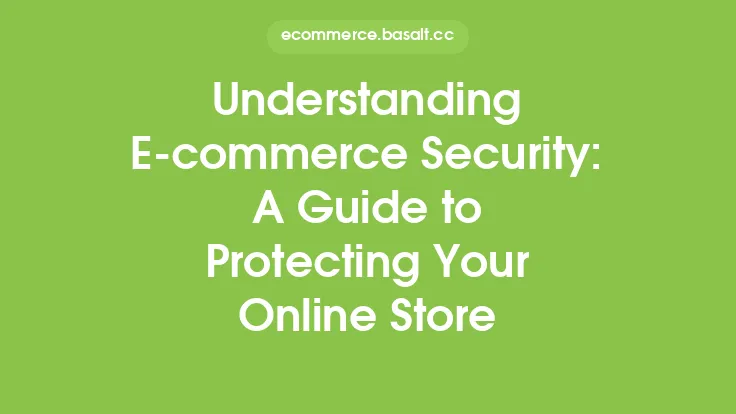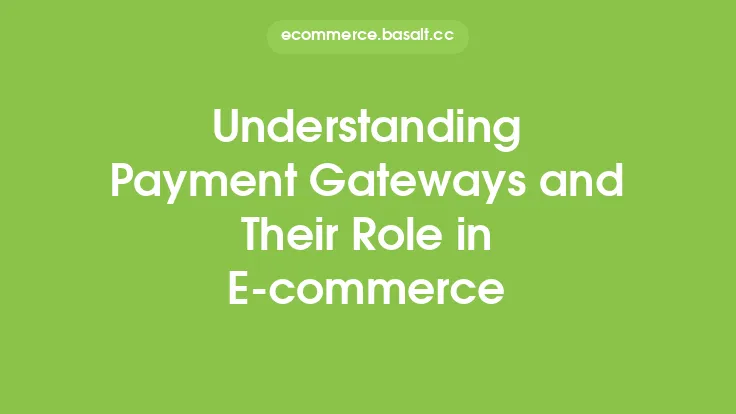As the e-commerce industry continues to grow and evolve, security threats have become a major concern for online businesses. The increasing number of cyber-attacks and data breaches has made it essential for e-commerce websites to prioritize security and take proactive measures to protect themselves and their customers. In this article, we will delve into the common e-commerce security threats, their consequences, and the strategies to mitigate them.
Types of E-commerce Security Threats
E-commerce security threats can be categorized into several types, including malware and viruses, phishing attacks, SQL injection attacks, cross-site scripting (XSS) attacks, and distributed denial-of-service (DDoS) attacks. Malware and viruses can compromise a website's security by stealing sensitive data, disrupting operations, or spreading malicious code. Phishing attacks, on the other hand, involve tricking customers into revealing their personal and financial information, which can be used for identity theft or financial fraud. SQL injection attacks involve injecting malicious code into a website's database to extract or modify sensitive data, while XSS attacks involve injecting malicious code into a website to steal user data or take control of user sessions. DDoS attacks involve overwhelming a website with traffic to make it unavailable to users.
Consequences of E-commerce Security Threats
The consequences of e-commerce security threats can be severe and long-lasting. A security breach can result in the loss of customer data, financial information, and intellectual property. It can also damage a company's reputation, erode customer trust, and lead to financial losses. In addition, security breaches can also lead to legal and regulatory issues, as companies may be held liable for failing to protect customer data. Furthermore, security breaches can also lead to a loss of business, as customers may be hesitant to shop on a website that has been compromised.
Strategies to Mitigate E-commerce Security Threats
To mitigate e-commerce security threats, businesses can take several proactive measures. First, they can implement robust security protocols, such as firewalls, intrusion detection systems, and encryption technologies. They can also conduct regular security audits and penetration testing to identify vulnerabilities and address them before they can be exploited. Additionally, businesses can implement secure coding practices, such as input validation and secure coding guidelines, to prevent common web application vulnerabilities. They can also use secure payment gateways and tokenization to protect sensitive payment information.
Best Practices for E-commerce Security
To ensure the security of their e-commerce websites, businesses should follow best practices, such as keeping software and plugins up-to-date, using strong passwords and authentication mechanisms, and monitoring website activity regularly. They should also implement a web application firewall (WAF) to protect against common web application attacks and use a secure sockets layer (SSL) certificate to encrypt data in transit. Furthermore, businesses should also have an incident response plan in place to quickly respond to security breaches and minimize damage.
The Role of Artificial Intelligence in E-commerce Security
Artificial intelligence (AI) and machine learning (ML) can play a significant role in e-commerce security by helping to detect and prevent security threats. AI-powered security systems can analyze website traffic and user behavior to identify potential security threats and alert administrators to take action. They can also help to automate security tasks, such as vulnerability scanning and penetration testing, to reduce the workload of security teams. Additionally, AI-powered security systems can also help to improve incident response times by quickly identifying and containing security breaches.
The Importance of Employee Education and Training
Employee education and training are critical components of e-commerce security. Employees should be educated on common security threats, such as phishing and social engineering attacks, and trained on how to identify and report suspicious activity. They should also be trained on secure coding practices, secure payment processing, and incident response procedures. Furthermore, employees should also be aware of the importance of security and the consequences of security breaches, and they should be encouraged to report security incidents and vulnerabilities to management.
Conclusion
In conclusion, e-commerce security threats are a major concern for online businesses, and it is essential to take proactive measures to protect against them. By understanding the types of security threats, their consequences, and the strategies to mitigate them, businesses can help to ensure the security and integrity of their e-commerce websites. By implementing robust security protocols, following best practices, and leveraging AI and machine learning, businesses can help to protect themselves and their customers from common e-commerce security threats. Additionally, employee education and training are critical components of e-commerce security, and businesses should prioritize educating and training their employees on common security threats and secure practices. By taking a proactive and multi-layered approach to security, businesses can help to build trust with their customers and establish a secure and trusted online shopping environment.





